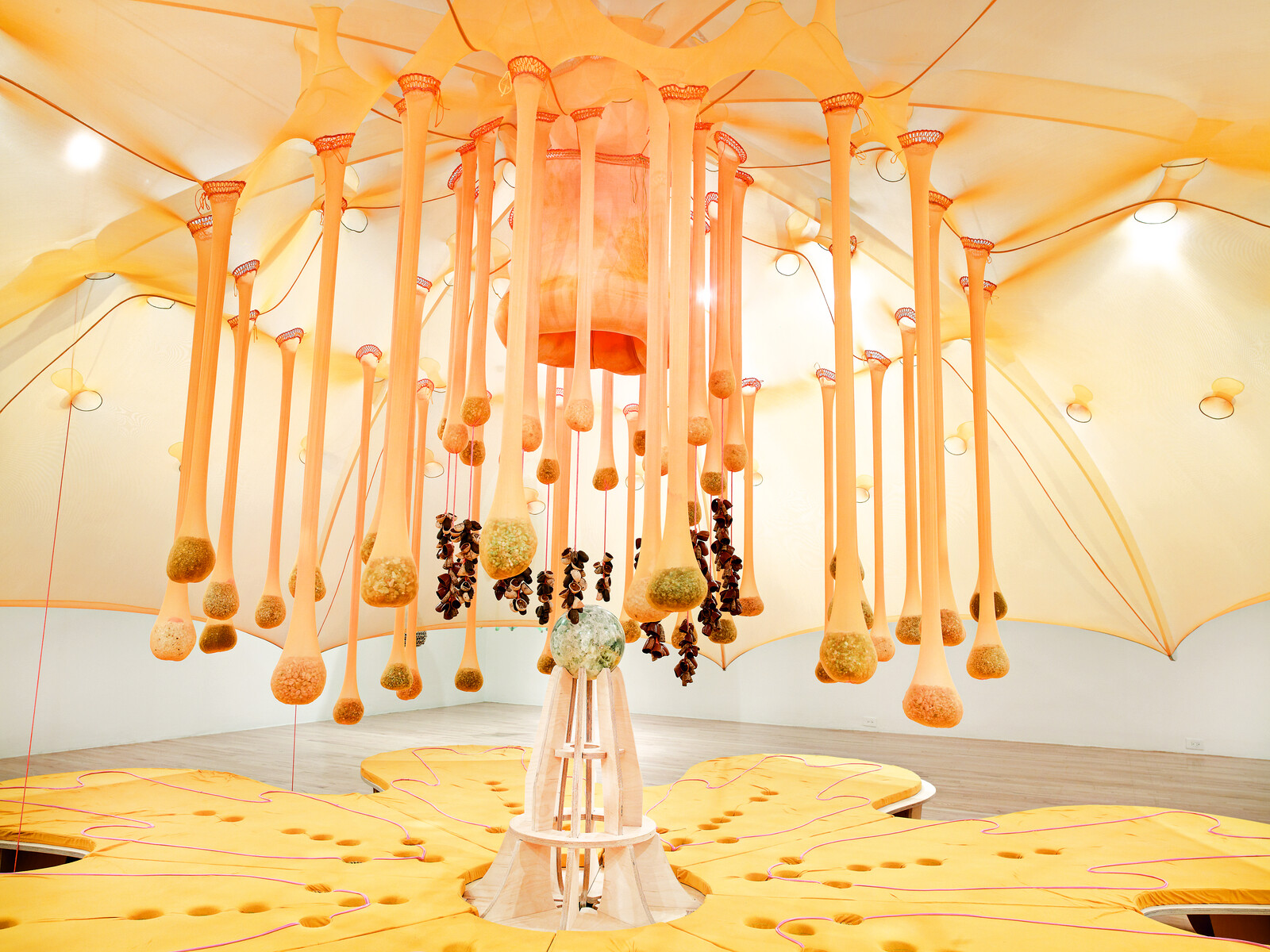From Giverny To Amazonia
March 18–August 28, 2017
1 Parvis des Droits de l’Homme
57020 Metz
France
Hours: Wednesday–Monday 10am–6pm
T +33 3 87 15 39 39
contact@centrepompidou-metz.fr
It was believed that gardens had been buried by modernity under the triumph of green spaces limiting the organic to functional areas. Yet, they remain a source of fertile inspiration all along the 20th century and continue to deeply appeal to many artists. The garden captivates, not only for its nourishing, curative and ornamental virtues but also for its subversion. Beyond the enclosed and organised space, the garden of this exhibition is a harbour for blurred, licentious and undisciplined private passions. A place of resistance and dissidence, it becomes a biological, ethical and political laboratory. Mostly contemporary, the works gather together for this exhibition draw the outlines of an obscure, chaotic and unpredictable experimental garden.
This exhibition depicts nature in the perspective of a metaphorical spring. Germination, blossoming and degeneration suggest the cycles of Earth, where the winter stop is the promise for future revolutions. Many artists venerate this vital momentum. Around 1912, in his essay about Creation in the Plastic Arts, František Kupka worships “a real pollen festival in the gynoecium bathed in sunlight” and translates theses celebrations in the organic impulse of Cosmic Spring (1913–14). Fertile ground of forms, the garden inspires artists with morphologies and fantastic metamorphoses revealing the intelligence of a non-human world. Thus, fantasising the exotic nature, Dominique Gonzalez-Foerster creates a tropical diorama, a proliferating garden-library in line with a series of installations inspired from illusionist’s devices of the 19th century. The Brazilian Ernesto Neto takes the Forum with a monumental sculpture, Leviathan-Main-Toth (2005).
The garden is also the place of genetic bifurcation which alters determinisms in favour of evolution. While he immortalises in his glass framed herbarium a cherished flora, Émile Gallé takes interest for the anomalies of Orchids. At the same time, Claude Monet creates hybrids and gets plants from all over the world, triggering the ire of the local farmers who fear poisoning by these foreign flowers. A century later, Pierre Huyghe creates “condensates of Giverny” in climate-programmed aquariums. If acclimation awakes the naturalists’ curiosity, it also serves the interest of a “botanic of power,” working on the colonisation then the eradication of “green pests.” Yto Barrada, Thu Van Tran and Simon Starling study the problematic of coexistence between “native” and “neophyte” plant species. Beyond the exoticism, the tropical and biomorphic alternatives of Roberto Burle-Marx or Lina Bo Bardi in Latin America and in Brazil revivify the functionalism of the European modernity.
At a time of intense intermixing, melting pot and migration phenomena which constantly reconfigure the biodiversity, the original fence of the garden, being material or conceptual, needs to be revaluated. During the symposium “Rethinking boundaries: architecture through space, time and disciplines” at the National Institute for Art History, Paris, in 2005, the garden historians Monique Mosser and Hervé Brunon postulate that “it is now necessary to think the enclosure as an open, material and living system at the same time.” Henceforth, the abolition of borders opens on an incessant quest, started as early as in the 16th century with the Dream of Poliphilus, where the garden, ideal place for research and initiation, opens on an infinity of gardens.
For Infinite Garden, Daniel Steegmann Mangrané creates an organic, earthly and solar scenery where he invites the visitor to wander among the immersive installations of the exhibition with the delight of a gardener.
The exhibition expands to the city of Metz through gardens set up by Peter Hutchinson, François Martig and Loïs Weinberger.
A catalogue and an anthology of texts from many artists on gardens, first compilation of a new collection launched by Centre Pompidou-Metz, comes along with the exhibition.
Curators:
Emma Lavigne, Director, Centre Pompidou-Metz
Hélène Meisel, Research and Exhibition Officer, Centre Pompidou-Metz
Still on view
Musicircus
Until July 17,2017
An Imagined Museum
Until March 27,2017
Coming soon
Fernand Léger
Beauty is everywhere
May 20–October 30, 2017
Opening hours
April 1–October 31: Monday, Wednesday–Thursday 10am–6pm, Friday–Sunday 10am–7pm
November 1–March 31: Wednesday–Monday 10am–6pm
Only 85 minutes via high-speed train from Paris.



